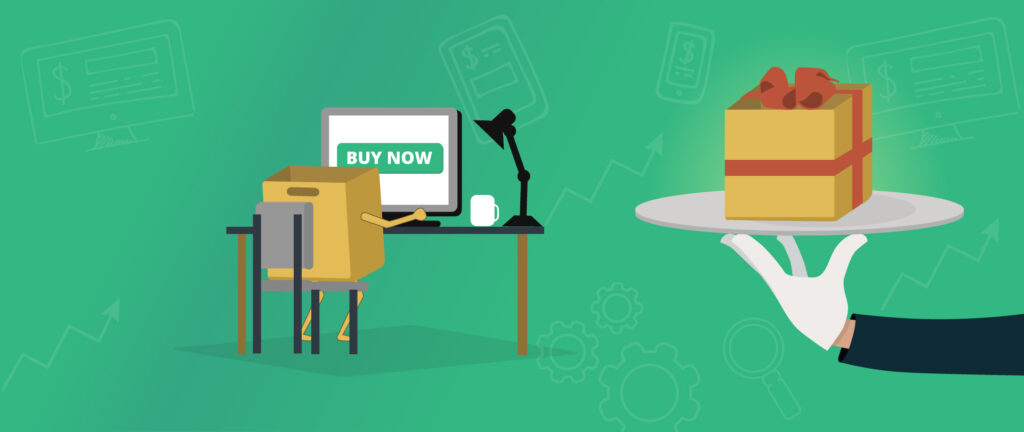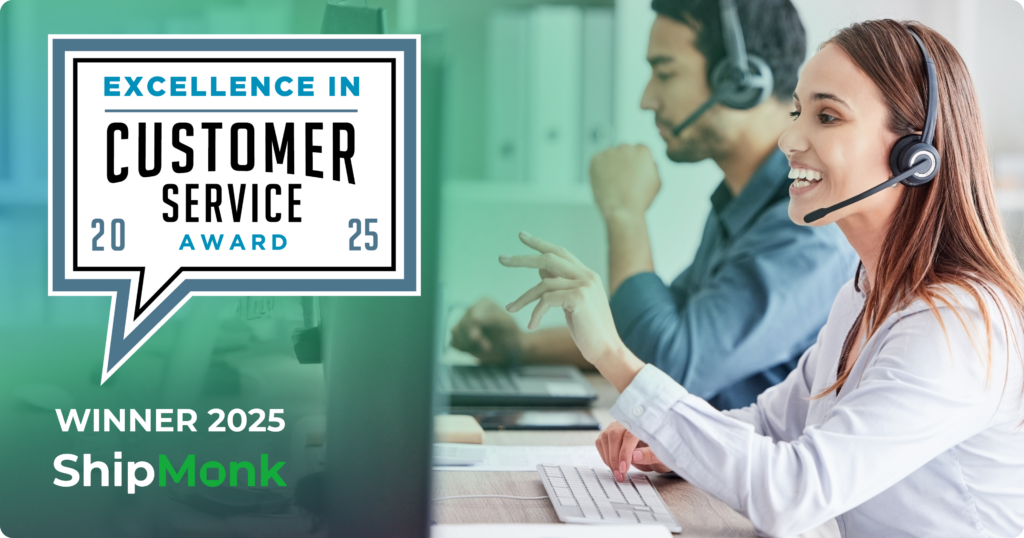What is contextual commerce?
While the term contextual commerce has become more popular recently, the concept it describes is not unfamiliar. Essentially, contextual commerce involves putting the right product in front of the right consumer at the right time.
The transaction happens within the context the consumer is currently in. For example, when you arrive to a concert stadium and vendors outside the venue are selling t-shirts and posters for the performer to sign, this is a basic and common example of contextual commerce. The product is available when and where you want it, just as you’re primed to make the purchase. It relies on the provider anticipating where a consumer is and what they will want at a given time, then crafting a frictionless transaction.
Today, contextual commerce is playing a more sophisticated role, propelled by consumers’ high engagement with (and time spent on) social media and messaging apps. Companies like Uber and Lyft are keying into exactly when and how people want to use their product, then delivering it at the opportune moment.
Here’s the scene: You’re chatting with a friend on Facebook Messenger and you send them a link to a restaurant you want to meet up at. Your friend can now hail an Uber directly from within the context of the chat session – without leaving the Messenger app and switching to a new context such as the Uber app. This adds ease and convenience for the consumer, shortening the time between buying intent and purchase.
Another hallmark example of contextual commerce in its prime is the emergence of Amazon Dash Buttons. These small WiFi-connected devices can be placed anywhere in your home to enable one-click reordering of your favorite household items. Hate running out of garbage bags? Put a Glad-brand Dash Button where you store your garbage bags! Just as you realize you’re running low, simply press the conveniently-placed button, then your products will arrive in a couple short days (with free shipping because, of course, Dash Buttons are exclusive to Amazon Prime members). Not only will you never run out of the product again, but you barely have to lift a finger to stay stocked up. That’s one small win for the consumer – and one giant leap for Amazon.
Don’t worry; if you’re not as big as Uber and Amazon, you can still compete in this evolving ecommerce landscape (even if you’re just starting to transition from brick-and-mortar to ecommerce).
How can small brands compete with contextual commerce?
Merchants, retailers, and brands of all sizes need to find a way to connect with consumers regardless of where they are engaging on mobile or on the web. Contextual commerce is something all merchants must embrace.
Be where your customers are.
Do not rely on customers coming to your beautifully-branded doorstep. “If you build it, they will come” does not apply to ecommerce. In 2017, you must bring the store to your customer. The first question to answer is: Where are your customers?
If your customers engage on Pinterest, utilize Buyable Pins. This technology allows consumers to discover and purchase products on Pinterest without needing to visit the merchant’s website. The customer is able to purchase on the platform they’re already on – a platform they’re familiar with and trust. This enables businesses to capitalize on consumers’ intent to purchase from within the app experience itself. Facebook, Instagram, and other popular social media platforms have similar buy-it-now buttons, allowing you to meet your customers no matter where they are in their journey.
Wherever a consumer discovers your brand, make it easy for them to buy right then and there. Creating a seamless transition from awareness to purchase is better for the customer (and crucial for your business).
Optimize the user experience of your website.
If a customer has found their way to your shop’s website, use the principles of contextual commerce to land the conversion.
Utilize responsive design.
This should be a given in 2017.
Adapt the website experience to the specific user.
Create a localized experience based on geographical location. For example, apply configurations to the display of local tax, fees, payment methods, and shipping restrictions.
Personalize product recommendations.
Guide consumers to purchase the best product for their lifestyle and needs while nurturing the customer journey so they can make more informed decisions and have a great customer experience the first time. Use existing customer data to develop personalized recommendations for products or services. Merchandize based on consumers’ browsing history and order history. Match relevant and related products to guide shoppers.
Merchandize search results.
Ensure your search tool is doing its part to convert shoppers into buyers. Use search terms to display relevant products and promote new product discovery. Offer other relevant search suggestions after a search has been performed.
Confirm what’s working.
Even small brands should be A/B testing. Display competing versions of content, pricing, or promotional offers to learn what triggers website shoppers to buy your products or click-through on an offer.
Make it easy to purchase and reorder.
Take notes from ecommerce giants such as Amazon. Enable seamless browsing, purchasing, payment, and order fulfillment.
Make it easy for customers to log in to your site using integrated social logins such as Facebook, PayPal, Twitter, LinkedIn, or Google+. Utilize a merchant account integration that enables your business to adopt a single integration that accepts credit & debit cards, digital wallets, and other forms of payments.
Use order history and browsing history to anticipate customer needs. Make it super intuitive to place an order in a few simple clicks. (Check out our other articles for more information on optimizing your shopping cart and creating a checkout page that converts.)
While most small merchants won’t be launching their own WiFi-enabled Amazon Dash reorder button, predictive notifications such as automated reorder emails can increase customer lifetime value. Brands that sell consumable products may consider subscription models to automatically replenish products as customers need.
Stand out.
It can be a bit daunting to compete with the innovative technologies that today’s ecommerce giants are rolling out. However, many consumers will still forego ease and convenience in order to support the brands they know and love.
Messaging is key.
When other companies are able to deliver more, faster, and cheaper, your brand must stand out with its messaging and branding. Why should consumers choose your brand over the competition? What does your brand stand for? How does your brand contribute to the community? Why can a customer feel good about purchasing from your store? Investing in solid messaging and branding that resonates with your target audience can make the difference between window shoppers and conversions.
Brand the entire experience.
Don’t let your curated branding efforts stop at the point of purchase. Consider branding your shipping or packing materials to create a lasting impression. Understand the key components of the perfect unboxing experience to deliver a stellar introduction to your product and brand.
Customer support will always matter.
Once you’ve secured a sale, it’s up to you to create a lifetime customer. Engage with customers using post-sale email marketing drip campaigns. Follow up on inquiries in a timely and professional manner. And when a customer calls or emails with a need for returning, exchanging, or troubleshooting a product, surpass their expectations and wow them with your brand’s amazing hospitality. Reward your customers for choosing your brand.
Stay in your lane.
Focus on your company’s zone of genius and outsource your pain points. Consumers expect small brands to offer the same delivery timeframes as big merchants. If tightening up your order fulfillment process is slowing down your business and straining your resources, consider hiring a fulfillment center to handle post-sale logistics so you can get back to focusing on what your business does best.
Contextual commerce is here to stay.
Much like the mobile boom, contextual commerce is the new normal. If small brands want to continue to compete with big merchants, it’s important to optimize sales opportunities by presenting the right products to the right consumers at the right time.
Is your business incorporating contextual commerce strategies? What results have you had? Email us your experiences, thoughts, or questions for a chance to be featured on our blog!






